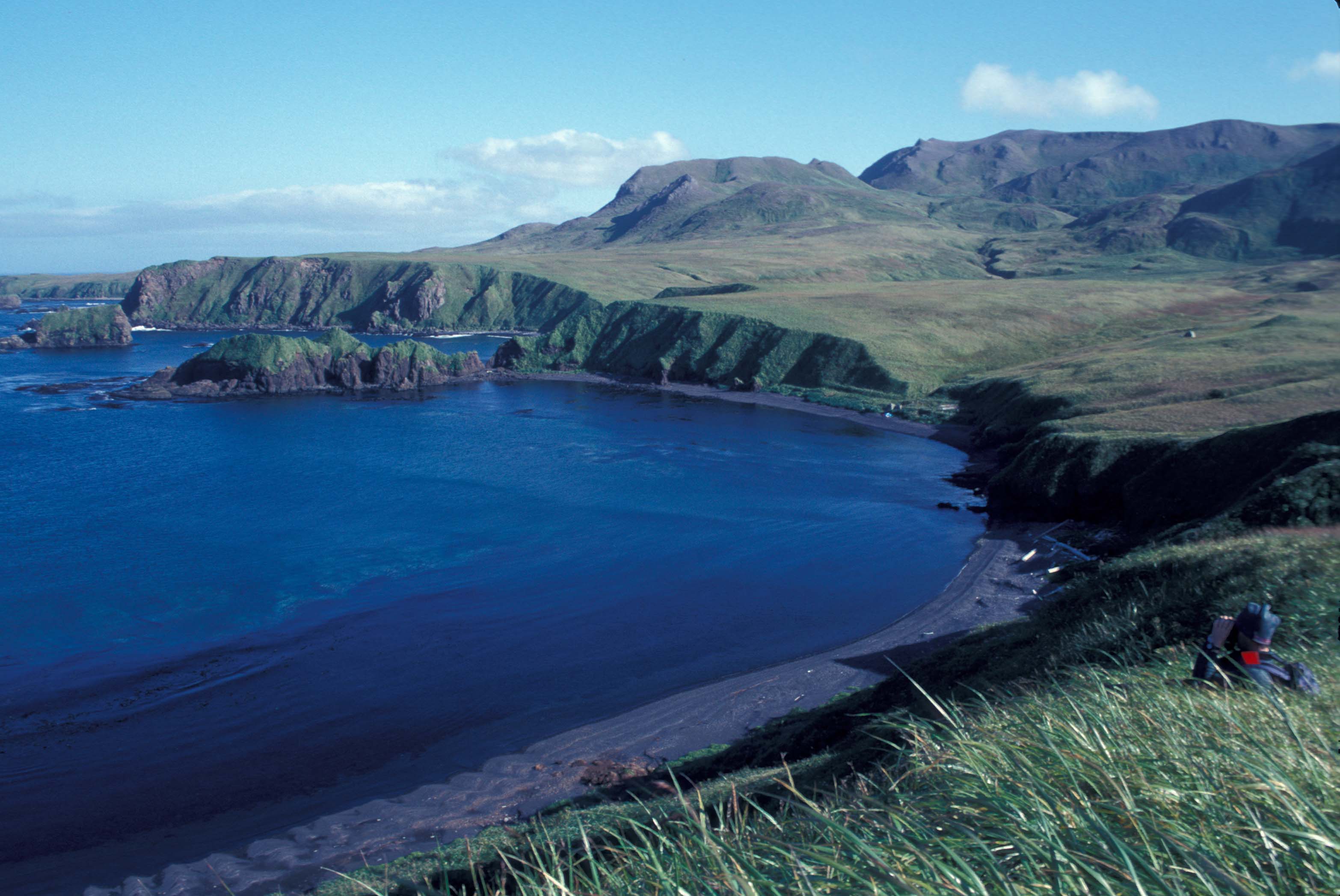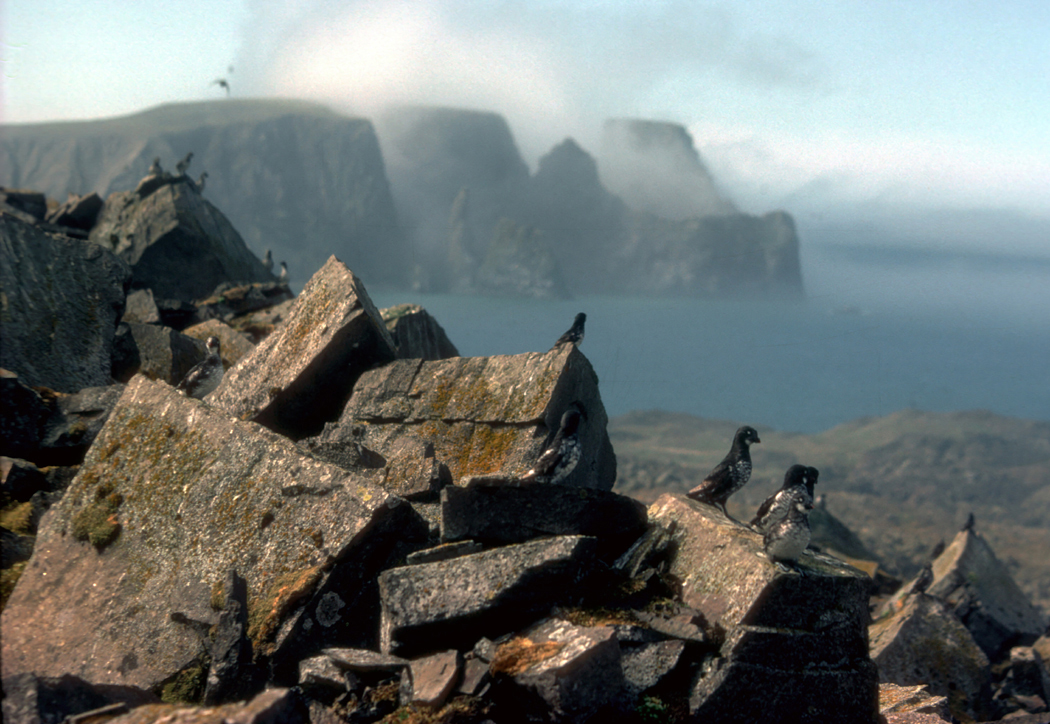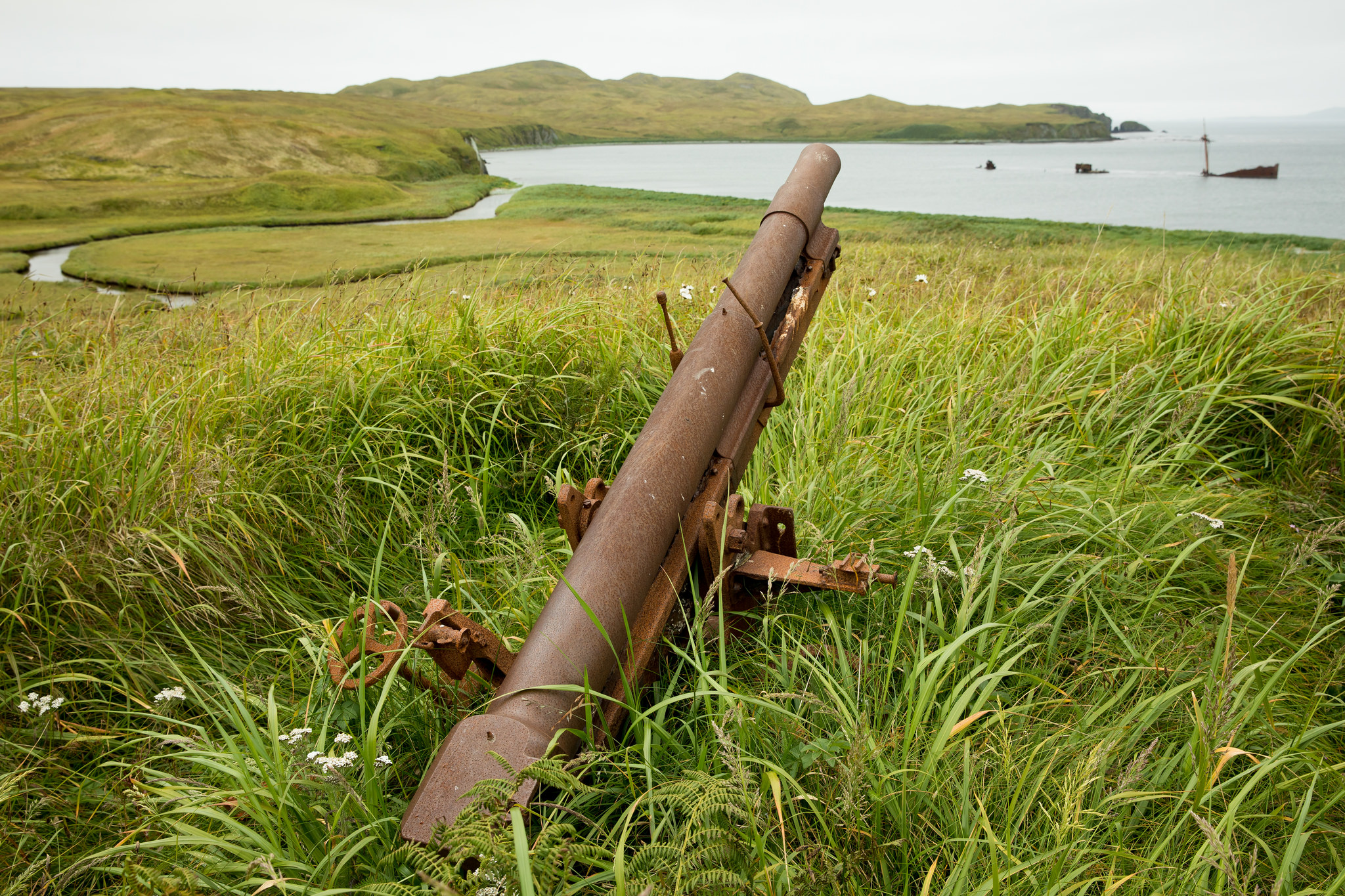For some Alaska islands there’s a ship-borne risk even scarier than an oil spill
As Arctic shipping increases, so does the threat of a so-called "rat spill" — an invasion of rats from a sinking ship — that can have far longer lasting ecological effects than an oil spill.

The most dangerous ecological disaster for the islands of the Aleutian chain and the Bering Sea, biologicals have long warned, wouldn’t be an oil spill, but a “rat spill” — an invasion, from wrecked ships, of the voracious rodents against which native species have no natural defenses.
Rats are notorious for wiping out species of birds and other animals on islands around the world. Invasive rats, brought to Mauritius Island by ships sailing the Indian Ocean, even played a role in the 17th-century extinction of the flightless Dodo bird.
Parts of the Aleutian chain have been close to shipping routes between Asia and North America for centuries, but the islands are poised to see an uptick in marine traffic from ships entering or exiting the increasingly ice-free Arctic Ocean through the Bering Strait.
Now Alaska scientists have compiled rankings for un-infested Bering Sea and Aleutian islands most vulnerable to invasions of rats fleeing sinking ships — and those already-infested islands where rat eradication programs would create the most ecological benefit. Findings are detailed in a study published in the journal Biological Invasions.

Most vulnerable, said the study, are islands in the eastern Aleutians and the easternmost Bering Sea, where vessel traffic is concentrated and where shipwrecks have occurred most frequently since the mid-20th century.
The three rat-free sites that are most vulnerable to new infestations, according to the study, are St. George in the Pribilofs, St. Matthew Island just south of the Bering Strait and tiny Buldir Island in the Aleutians. Each of these islands has large seabird colonies — and close proximity to ship traffic.
Northern parts of the region are also likely to become more vulnerable to new introductions as the climate warms and chances of winter rat survival increase, the study said.
The already infested islands where an eradication program would be most beneficial, the study found, are Attu and Kiska at the far west of the Aleutian chain. Both islands were active military sites in World War II, the time when rats were likely introduced there.

While there are legitimate concerns about oil spills when ships wreck, said Martin Renner, the study’s lead author, rats can cause longer-lasting damage.
“I would argue that rats are a bigger danger,” said Renner, an independent biologist based in Homer. “If it’s a rat-free island, the oil spill will go away, no matter how bad it is.” Not so with rats, he said.
Once non-native rats are established on an island, it is extremely difficult to dislodge them, but it is not impossible. One of the world’s most famous rat-eradication projects has already happened on one Aleutian island.
The site, in the western part of the chain, was the first in Alaska to be invaded by rats; they swam to the island from a Japanese sailing ship that wrecked in the late 1700s. The rats multiplied and, over the next two centuries, took control of the island ecosystem, feasting on defenseless birds and eggs. The island became almost devoid of birds. Its official name: Rat Island.
To get rid of the Rat Island rats, biologists and technicians in 2008 staged a sustained air campaign to drop poison-laced food pellets.
The project took years of planning. Costs for operating in the remote area ran into the millions, and had created an unfortunate side effect, the poisoning of many bald eagles and gulls.
The end result was a success, though, said Steve Delehanty, manager of the Alaska Maritime National Wildlife Refuge, which includes most of the Aleutian islands.
Follow-up surveys found a wide diversity of birds now at the island, and also a marked recovery of native plants. The island has been renamed Hawadax, a native Unangan word referring to the two knolls that are distinctive features of the island. It no longer bears the name “Rat Island.”
“It is blissfully rat-free,” Delehanty said.
Kiska and Attu, the two islands where eradication would offer the biggest ecological rewards, are both reasonably distant from the bulk of ship traffic, so they would face a relatively low risk of re-infestation if rats were removed, according to the study. Both have important bird habitat, with potential for improvements.
For birds, Kiska, is a special case. It holds the world’s biggest colony of auklets, birds that burrow between rocks and on cliffs to nest. The least auklets and crested auklets nesting in the crevices of volcanic Kiska help make the island one of the most important in Alaska for seabirds. Studies show that the Kiska rats have taken a big toll on the auklets’ productivity and abundance.
“The good news is the auklets are still present,” Delehanty said. “The concern is that the rats could, at some point, entirely overwhelm the auklets.”
He would love to see the Rat Island-to-Hawadax transformation replicated at Kiska, he said, but it would likely be a difficult endeavor. Kiska is much bigger than Hawadax, so just completing a feasibility study for rat eradication there would probably cost hundreds of thousands of dollars — and carrying one out would cost millions, he said.
“We are not, in this climate, even in a position to do the assessment,” he said.
That may change.
The Fish and Wildlife Service hopes to hold an invasive species conference this fall to discuss future strategies for rats and a variety of invasive species in the refuge — from small marine creatures to foxes and even some feral populations of cattle left by abandoned ranching operations, Delehanty said. The new rat-risk study will help with some recommendations, he said.
It has been illegal in Alaska since 2007 for anyone to harbor rats. By the time that regulation went into effect, rats were already established in many Alaska coastal areas. They are found as far north as the Bering Strait town of Nome, though they generally live inside buildings there, not outdoors.
The northernmost limit for rat survival is not yet known, but as the climate warms, it is likely to shift to higher latitudes, Delehanty said.
“If that line exists, I don’t know where it is, and with a changing climate, that line is certainly changing,” he said.
Yereth Rosen is a 2018 Alicia Patterson Foundation fellow.